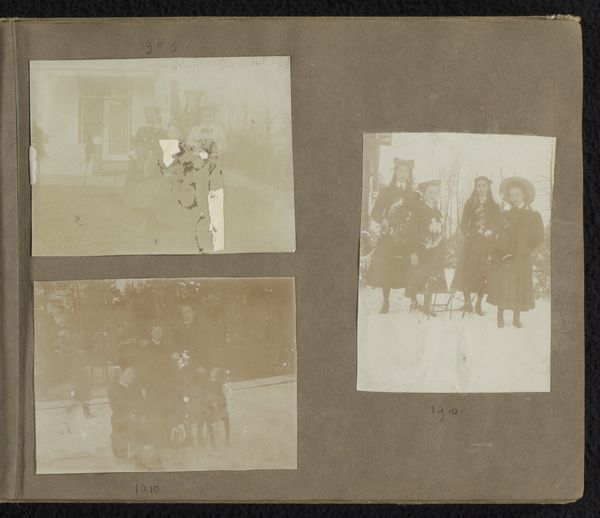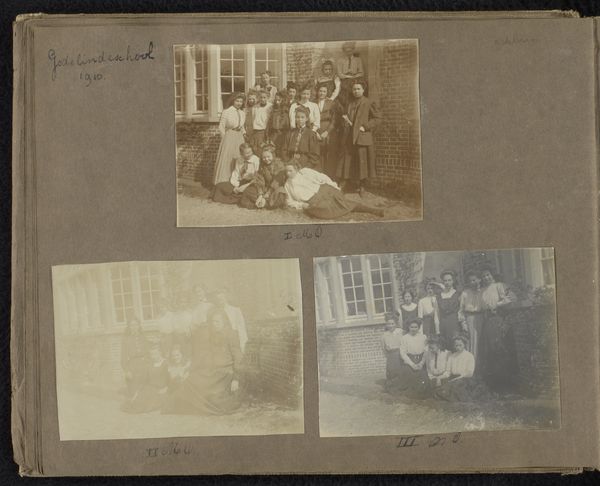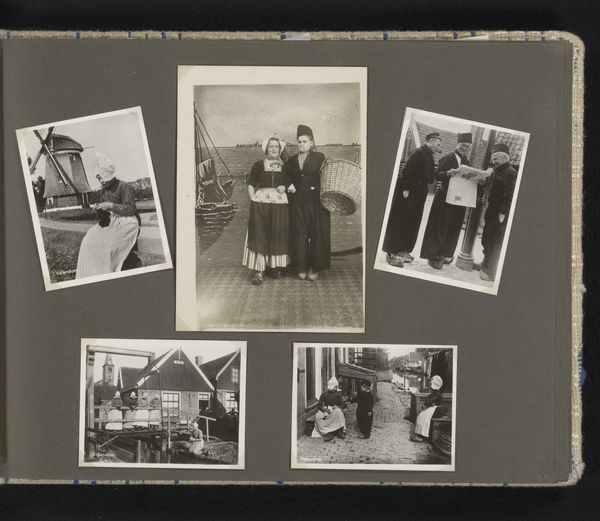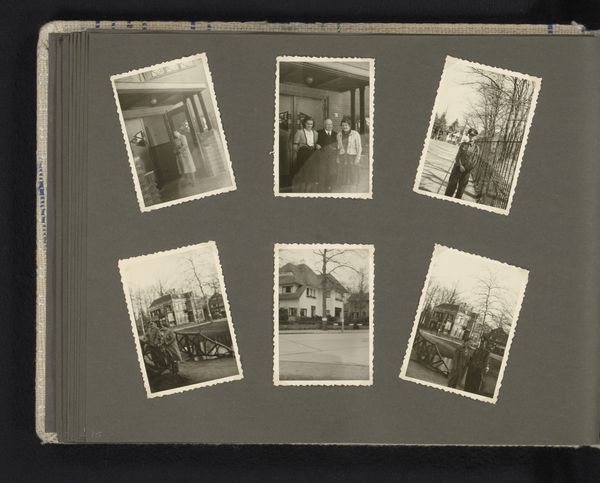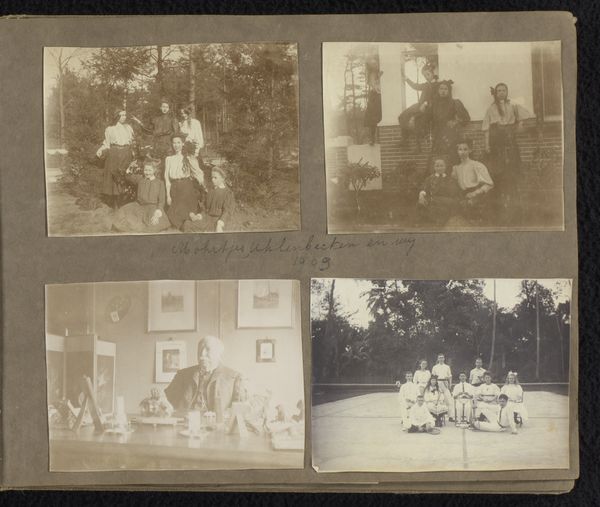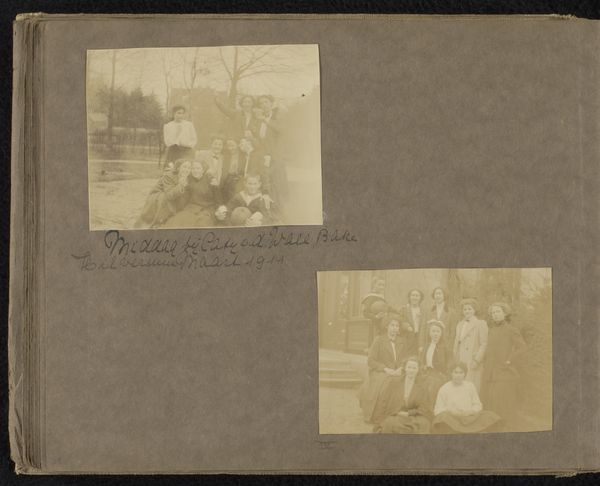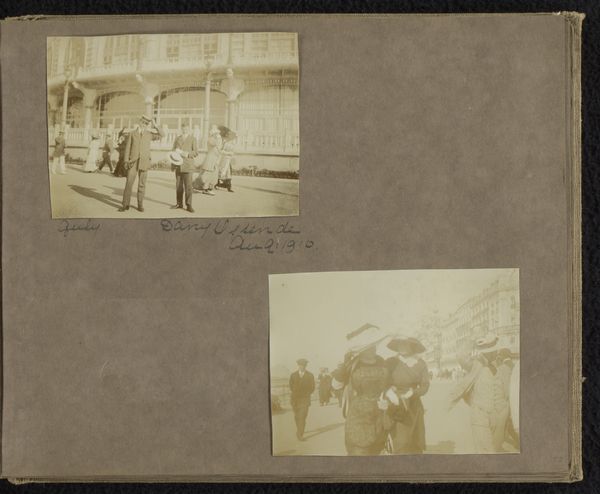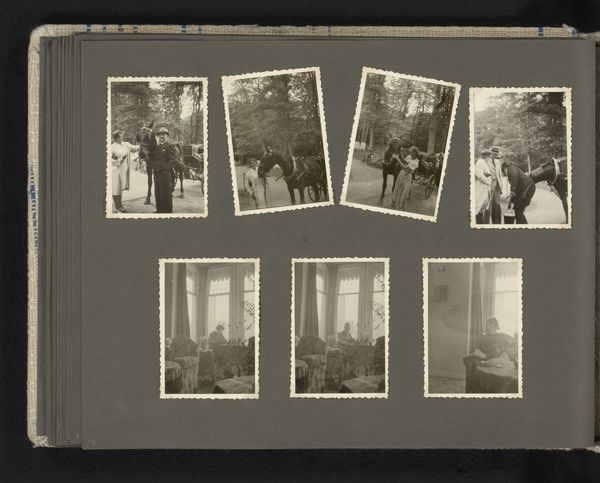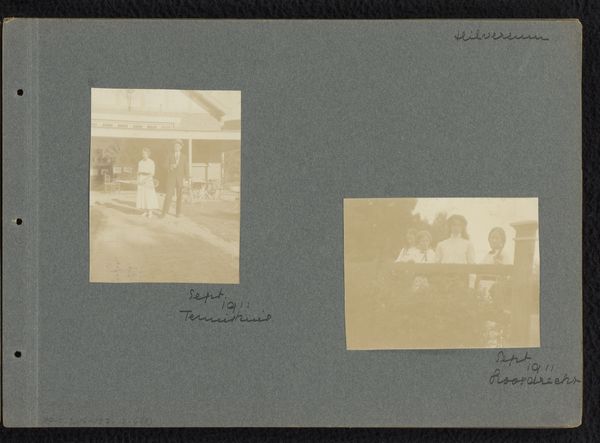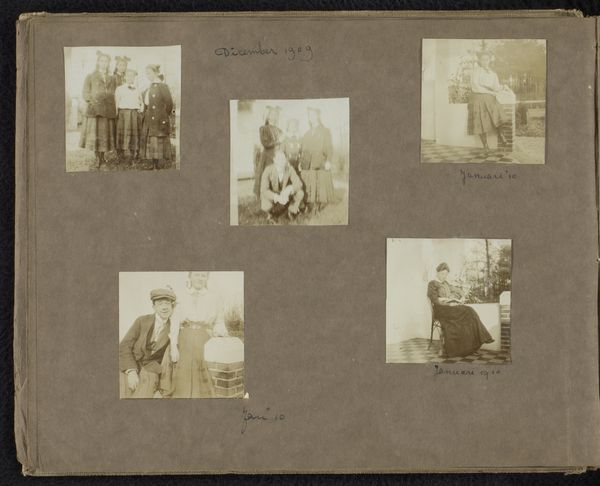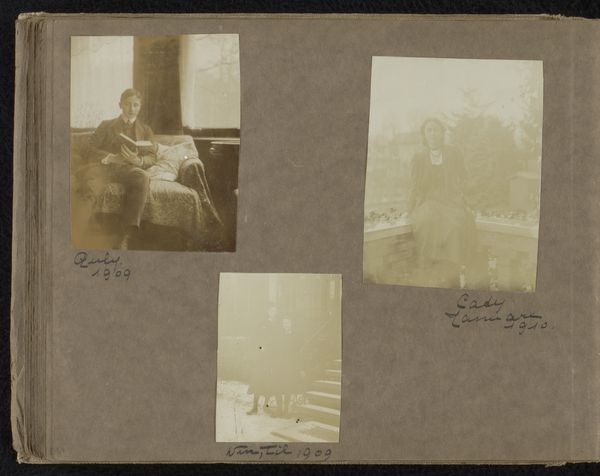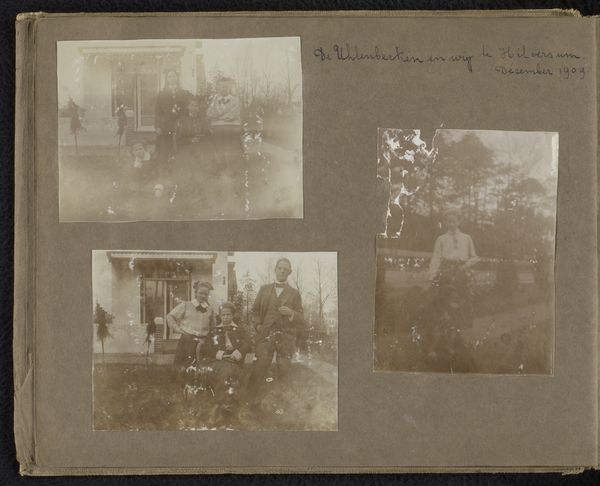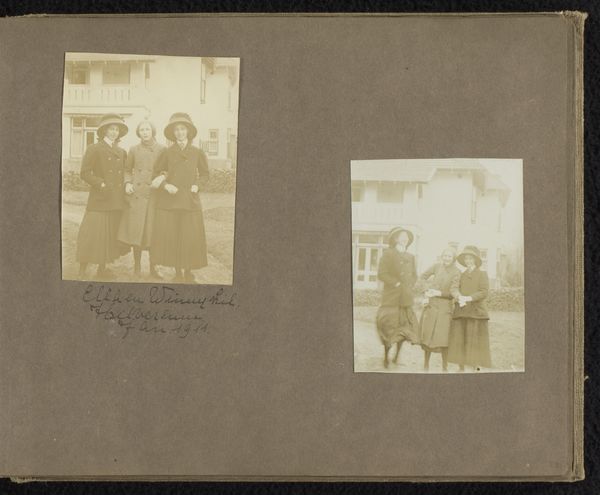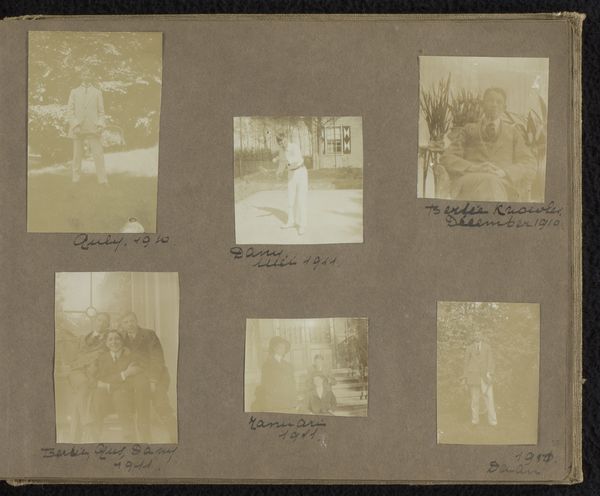
Drie foto's van Loentje en Willy Onnen met de familie Uhlenbeck bij een auto 1910 - 1911
0:00
0:00
photography, albumen-print
#
portrait
#
pictorialism
#
photography
#
genre-painting
#
albumen-print
Dimensions: height 203 mm, width 253 mm
Copyright: Rijks Museum: Open Domain
Editor: We are looking at "Drie foto's van Loentje en Willy Onnen met de familie Uhlenbeck bij een auto," a photograph dated between 1910 and 1911. It's an albumen print, part of a larger album. What strikes me is the hazy, almost dreamlike quality. How do you read this set of images? Curator: Initially, let’s consider the formal arrangement. Three separate images, unified by their content and sepia tone, exist within the frame of the album page. The soft focus is characteristic of pictorialism, doesn’t it? Note how this choice deliberately softens the contours, shifting away from straightforward documentation towards something more evocative. Editor: Yes, the lack of crispness is immediately apparent. Why use that particular style? Curator: Think of the artistic climate. Photography, striving for recognition as art, deliberately mimics painting. Soft focus, tonal manipulation—these are strategies to elevate photography beyond mere mechanical reproduction. Observe how the light functions: it’s diffused, flattening the space and unifying the subjects with their surroundings. Each print operates as a study in light and shadow, a reduction to tone, more than a clear depiction of family. Editor: So, the image itself is the message. What would you say is the intended message? Curator: One reading is about photography’s own claim to artistic validity, using the family gathering only as subject to facilitate formalistic explorations. How each element – the automobile, the figures, the landscape – plays a crucial role in the visual effect, a harmony of tonal values and deliberately arranged forms, as in genre painting, but caught on film instead. Editor: Fascinating! I hadn’t considered how much the style itself communicated artistic intention beyond simply documenting the subject. Curator: Exactly. And hopefully we learn how careful examination can unveil such implicit arguments.
Comments
No comments
Be the first to comment and join the conversation on the ultimate creative platform.
